This article explores the best room dividers for studio apartments, offering insights into their benefits, types, and how to choose the right one for your needs. In compact living spaces, achieving both functionality and style can be a challenge. Room dividers serve as a perfect solution to create distinct areas while maintaining an open feel.
Understanding the necessity of room dividers can enhance your living space by providing privacy and functionality in a compact area. They allow you to separate your sleeping area from your living space, making your studio feel more like a one-bedroom apartment. Additionally, they can help reduce noise, create a sense of organization, and even serve as decorative elements.
Exploring various types of room dividers, from folding screens to bookshelves, helps you choose the best option that suits your style and needs. Here are some popular types:
- Folding Screens: Versatile and stylish, folding screens can easily be moved and stored.
- Bookshelves: Practical and functional, bookshelves not only divide space but also provide storage.
- Curtains: Soft and flexible, curtains can be drawn when needed to create private spaces.
- Sliding Panels: These can be an elegant solution that saves floor space while adding style.
Selecting the ideal room divider involves considering factors such as size, style, and functionality to ensure it fits seamlessly into your studio. Here are some tips:
Accurately measuring your studio apartment is essential to ensure the room divider fits without overwhelming the space. Consider the height, width, and depth of the divider and how it interacts with your existing furniture.
Choosing colors that complement your existing decor can make the room divider blend in or stand out, depending on your preference. For a cohesive look, consider matching the divider with your furniture or wall colors.
Creating your own room divider can be a fun and cost-effective way to achieve the desired look and functionality in your studio apartment. Here are some ideas:
Common materials for DIY dividers include curtains, pallets, and repurposed furniture, allowing for creativity and personalization. You can even use decorative screens or fabric to create a unique look.
1. Gather materials: Choose your preferred materials based on style and budget.2. Measure your space: Ensure your DIY divider fits well in your studio.3. Assemble the divider: Follow a simple design or create something unique.4. Finish with decor: Add elements like plants or lights to enhance the look.
Transparent or semi-transparent room dividers can offer a unique balance between openness and privacy, making them an attractive choice for studio apartments. They allow light to flow through while still providing a sense of separation.
Understanding the different levels of transparency can help you select a divider that provides the right amount of privacy without closing off the space. Consider options like frosted glass or sheer fabrics that allow light while obscuring visibility.
Incorporating design elements, such as patterns or textures, can enhance the visual appeal of transparent room dividers while maintaining functionality. Choose designs that resonate with your personal style to create a cohesive look.
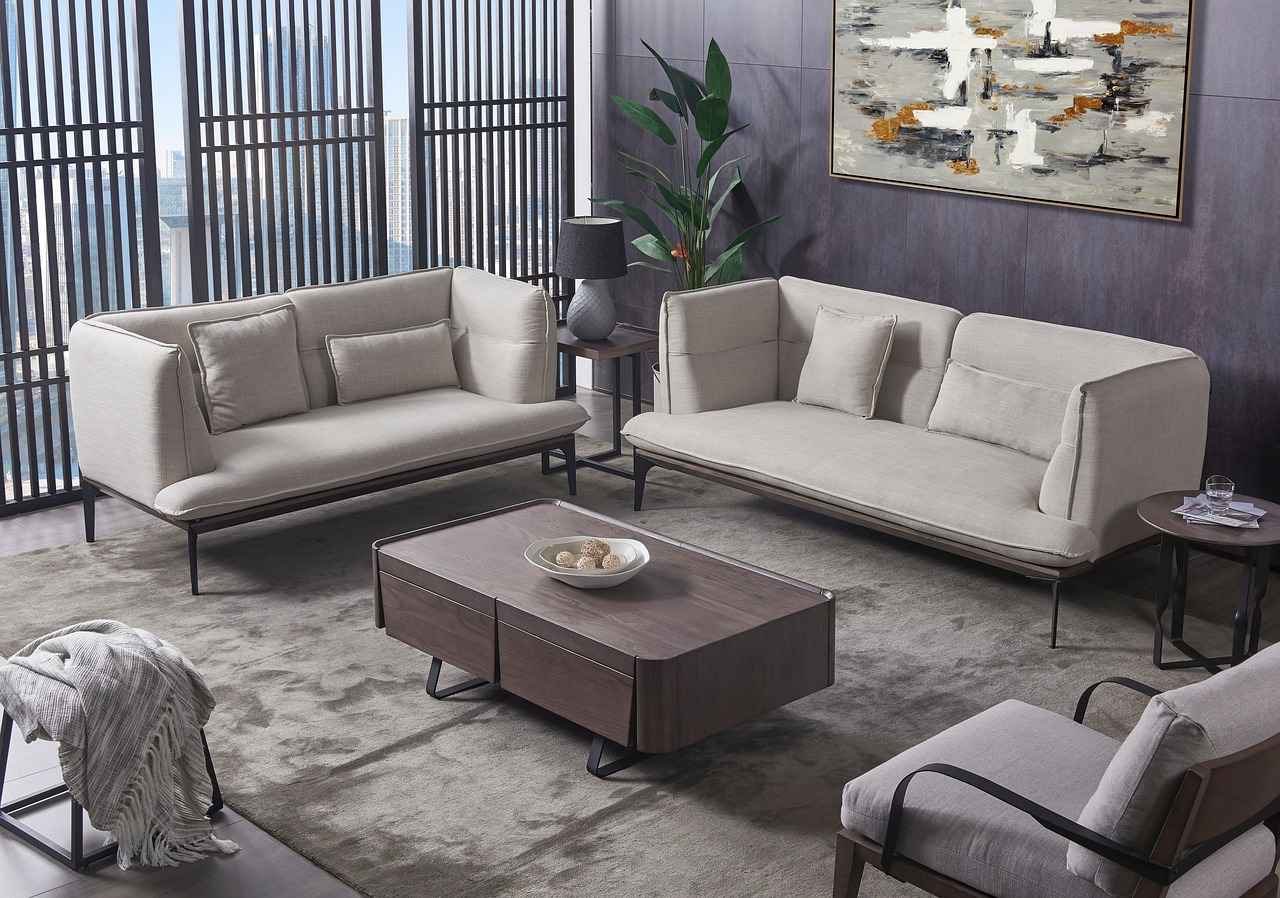
Why Use a Room Divider in a Studio Apartment?
In today’s urban living, studio apartments have become increasingly popular due to their compact design and affordability. However, the challenge lies in maximizing the functionality of these limited spaces. Understanding the necessity of room dividers can significantly enhance your living area by providing both privacy and functionality. By strategically placing a room divider, you can create distinct zones for sleeping, working, or relaxing, making your studio feel more spacious and organized.
Room dividers serve multiple purposes beyond merely separating spaces. They can act as a decorative element, adding style and personality to your apartment. Additionally, they help in reducing noise, creating a more tranquil environment, which is essential in a shared living space. For instance, if you work from home, a room divider can help you establish a dedicated workspace, allowing you to focus without distractions.
Moreover, room dividers can enhance your storage solutions. Many designs, such as bookshelves or cabinets, provide not only a barrier but also functional storage space for your belongings. This dual-purpose functionality is particularly beneficial in a studio apartment where every square foot counts.
When choosing a room divider, it’s crucial to consider your personal style and the overall aesthetic of your home. There are various types available, from elegant folding screens to modern shelving units. Each type offers unique benefits, allowing you to select one that aligns with your needs and preferences.
Furthermore, room dividers can be a temporary solution for renters who may not want to make permanent changes to their living space. They can be easily moved or reconfigured as needed, providing flexibility as your living situation evolves.
In summary, room dividers are essential for studio apartments as they provide privacy, enhance functionality, and contribute to the overall aesthetic of the space. By investing in the right room divider, you can transform your studio into a more organized and inviting home.
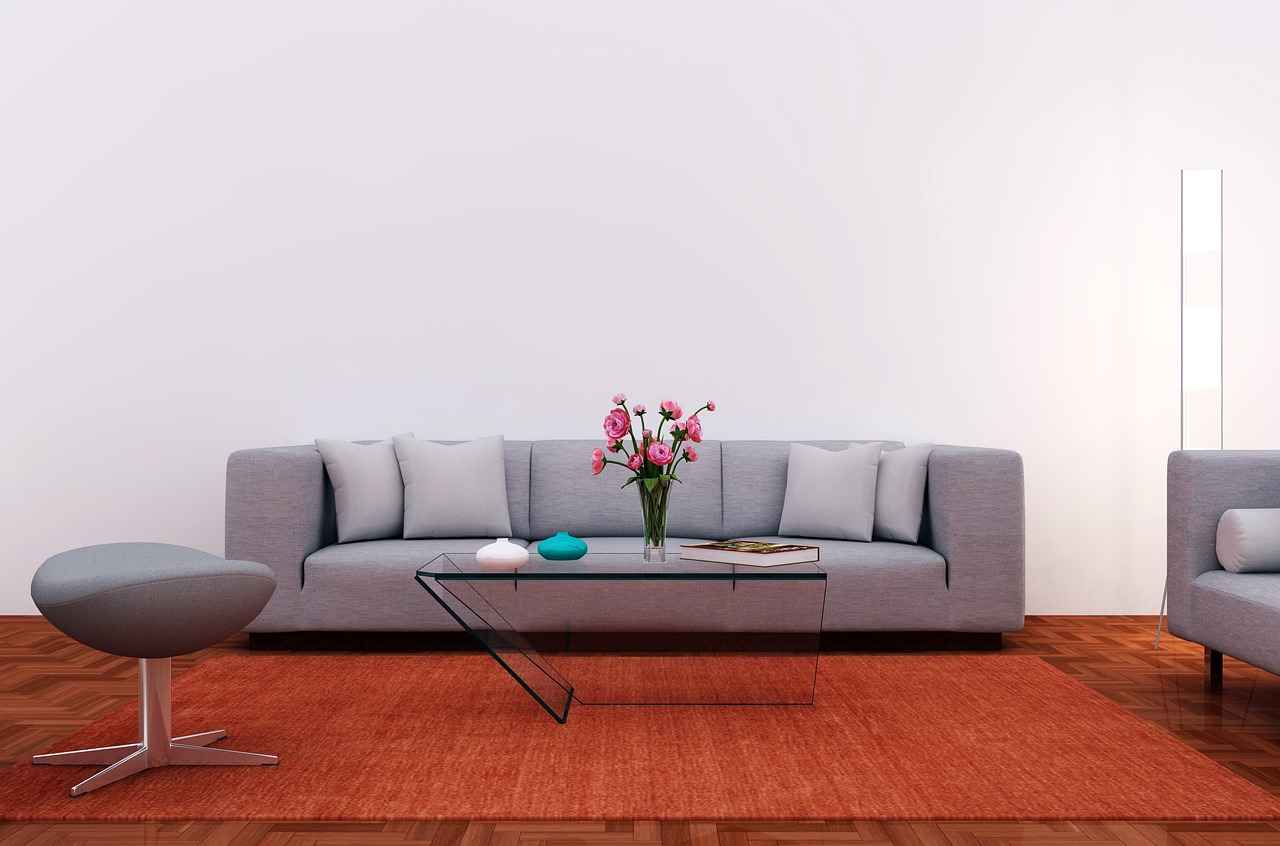
Types of Room Dividers: Which Is Right for You?
When it comes to maximizing space in studio apartments, room dividers play a crucial role. They not only enhance privacy but also add a unique aesthetic appeal to your living area. With a variety of options available, understanding the different types of room dividers can help you make an informed decision tailored to your style and needs.
Exploring various types of room dividers, from folding screens to bookshelves, offers a wealth of choices for homeowners and renters alike. Each type has its own unique benefits and can serve different purposes in your space.
- Folding Screens: These versatile dividers are perfect for creating temporary spaces. Their lightweight design allows for easy repositioning, making them ideal for those who often rearrange their living areas. Available in numerous styles and materials, folding screens can complement any decor.
- Bookshelves: Using bookshelves as room dividers not only provides privacy but also adds valuable storage space. They can be filled with books, plants, or decorative items, enhancing both functionality and style.
- Curtains: A cost-effective solution, curtains can be hung from a rod to create a soft and inviting division. They offer flexibility in terms of openness and privacy, allowing you to adjust them based on your needs.
- Sliding Panels: These modern dividers can slide open or closed, providing an elegant way to separate spaces. They are particularly useful in larger studios where you want to maintain an open feel while still having the option for privacy.
- Glass Partitions: For a contemporary look, glass partitions can be an excellent choice. They allow natural light to flow while still providing a sense of separation, making them ideal for smaller spaces.
When choosing the right room divider, consider your personal style, the functionality you need, and the overall layout of your studio. Are you looking for something that can easily be moved? Or do you prefer a more permanent solution? Understanding these factors will guide you in selecting the best option for your living space.
Additionally, think about the materials and colors that will best complement your existing decor. A cohesive look can enhance the overall aesthetic of your studio. For instance, a wooden folding screen can add warmth, while a sleek glass divider can provide a modern touch.
Ultimately, the best room divider for your studio apartment will reflect your unique taste and meet your specific needs. Whether you opt for a decorative folding screen or a practical bookshelf, the right choice can transform your space into a more functional and stylish living environment.
Folding Screens: Versatile and Stylish
When it comes to maximizing the potential of a studio apartment, folding screens emerge as a popular choice. Their versatility and stylish designs not only offer practical solutions for creating temporary divisions but also enhance the overall aesthetic of your living space. This article delves into the various aspects of folding screens, highlighting their benefits and offering guidance on selecting the perfect one for your needs.
Folding screens are an excellent option for studio apartments due to their flexibility and ease of use. They can be easily repositioned to create distinct areas for different activities, such as working, sleeping, or entertaining guests. This adaptability allows you to customize your space according to your needs, making it feel more organized and functional.
- Easy to Move: Unlike traditional walls, folding screens can be relocated effortlessly, allowing you to change your layout as desired.
- Space-Saving: When not in use, they can be folded away, freeing up valuable floor space.
- Design Variety: Available in numerous styles, colors, and materials, folding screens can complement any decor.
- Affordability: They are often more budget-friendly than permanent room dividers, making them a practical choice for renters.
The material of your folding screen can significantly influence both its durability and visual appeal. Common materials include:
- Wood: Offers a classic and sturdy look, perfect for traditional or rustic decor.
- Fabric: Provides a softer appearance and can be easily customized with patterns and colors.
- Metal: Adds a modern touch and is often used in contemporary designs.
- Plastic: Lightweight and easy to clean, making it suitable for various environments.
Choosing the right design style for your folding screen can significantly enhance your studio’s ambiance. Here are some popular styles:
- Modern: Sleek lines and minimalistic designs that suit contemporary apartments.
- Traditional: Ornate details and rich finishes that add elegance and warmth.
- Eclectic: Unique patterns and colors that express your personal style.
To make the most of your folding screen, consider the following tips:
- Placement: Position the screen to create a natural flow within the space while ensuring it does not obstruct light.
- Layering: Combine the screen with other decorative elements such as plants or artwork to enhance the visual interest.
- Functionality: Use the screen to define areas, such as separating a workspace from a sleeping area, to improve productivity and relaxation.
To keep your folding screen looking its best, regular maintenance is essential. Depending on the material, you may need to:
- Dust Regularly: Use a soft cloth to remove dust and prevent buildup.
- Clean Stains Promptly: For fabric screens, spot clean with appropriate cleaners; for wood, use a damp cloth.
- Check Hinges: Ensure that the hinges are functioning properly to maintain ease of use.
In conclusion, folding screens are a versatile and stylish solution for studio apartments. They provide the flexibility to create distinct areas while enhancing your living space’s aesthetic. With a variety of materials and designs available, you can easily find a folding screen that suits your personal style and meets your functional needs.
Material Choices for Folding Screens
When selecting a folding screen for your space, material choices play a crucial role in both the durability and design of the piece. The right material can enhance the overall aesthetic of your studio apartment while ensuring that the divider serves its purpose effectively.
Folding screens come in a variety of materials, each offering unique benefits:
- Wood: Known for its sturdiness and timeless appeal, wooden folding screens can add warmth and character to your space. They are often available in various finishes, allowing you to match them with your existing decor.
- Fabric: Fabric screens are lightweight and can introduce color and texture to your room. They are often used for a softer look and can be easily changed to suit seasonal decor.
- Metal: For a more contemporary and industrial feel, metal folding screens are a great choice. They are highly durable and can be designed in intricate patterns to add visual interest.
- Glass: Glass folding screens provide a modern touch, allowing light to flow through while still creating a division in the space. They can be framed in wood or metal for added stability.
The durability of a folding screen is heavily influenced by the material used. For instance:
- Wooden screens, while sturdy, can be susceptible to moisture damage if not properly treated.
- Fabric screens may require more maintenance, as they can collect dust and stains, but they are generally easy to clean.
- Metal screens are resistant to wear and tear, making them ideal for high-traffic areas.
- Glass screens, while elegant, can be fragile and may not be suitable for homes with pets or children.
Choosing the right material also opens up various design options:
- Wooden folding screens can feature intricate carvings or painted designs that reflect your personal style.
- Fabric screens can be customized with patterns, colors, and textures, allowing for a personalized touch.
- Metal screens can be designed with geometric shapes or cut-outs, providing a modern artistic flair.
- Glass screens can be frosted or etched with designs, offering both privacy and style.
When deciding on the right material for your folding screen, consider the following:
- Functionality: Determine how you plan to use the screen. Will it be a permanent fixture or a temporary solution?
- Aesthetic: Think about how the material will complement your existing decor.
- Maintenance: Some materials require more upkeep than others. Choose one that fits your lifestyle.
- Budget: Different materials come at various price points, so consider your budget while making a choice.
In conclusion, the materials used in folding screens significantly impact not only their durability but also their design. By understanding the different options available, you can choose a folding screen that not only enhances your studio apartment but also meets your practical needs.
Design Styles for Folding Screens
When it comes to enhancing the functionality and aesthetics of your studio apartment, choosing the right design style for your folding screens is crucial. The right style can seamlessly complement your existing decor, whether you lean towards a modern, traditional, or eclectic look. This guide will help you navigate through various design styles, ensuring that your folding screen not only serves its purpose but also enhances the overall ambiance of your space.
Folding screens come in a variety of styles, each offering unique characteristics that can either blend in or stand out in your studio. Here are some popular design styles:
- Modern: Clean lines and minimalist aesthetics define modern folding screens. These screens often feature materials like metal and glass, offering a sleek and contemporary look.
- Traditional: Traditional folding screens are often crafted from wood and may include intricate carvings or ornate designs. They add a touch of elegance and timelessness to any room.
- Eclectic: Eclectic styles combine various elements from different periods and cultures. A folding screen in this style can be a vibrant piece that showcases unique patterns, colors, and textures.
- Industrial: Industrial folding screens typically use raw materials like reclaimed wood and metal, offering a rugged and urban feel that is perfect for modern lofts.
- Scandinavian: Known for their simplicity and functionality, Scandinavian folding screens often utilize light woods and soft colors, creating a cozy and inviting atmosphere.
Choosing the right design style for your folding screen involves considering several factors:
- Existing Decor: Take a close look at your current decor. Does it lean towards modern simplicity or traditional elegance? Your folding screen should either match or contrast effectively to create a cohesive look.
- Functionality: Consider how you intend to use the folding screen. If you need it for privacy, a more solid design may be necessary, whereas a decorative piece can serve as a visual divider.
- Space Dimensions: The size of your studio apartment will dictate the scale of the folding screen. A large, bold design can make a statement in a spacious area, while a smaller, more delicate screen may be better suited for compact spaces.
- Color Palette: Select colors that either complement or contrast your existing color scheme. A neutral folding screen can blend in, while a bold color can act as a focal point.
Absolutely! Mixing and matching different design styles can create a unique and personalized aesthetic in your studio apartment. Consider pairing a modern folding screen with traditional furniture or an eclectic screen with minimalist decor. The key is to maintain a balance, ensuring that the different elements work harmoniously together.
Finding the perfect folding screen can be an enjoyable experience. Here are some places to explore:
- Online Retailers: Websites like Amazon, Wayfair, and Etsy offer a wide range of folding screens in various styles and prices.
- Local Furniture Stores: Visiting local furniture stores allows you to see the screens in person and assess their quality and design.
- Thrift Shops: Don’t overlook thrift shops or flea markets, where you can find unique and vintage folding screens that can add character to your space.
In conclusion, selecting the right design style for your folding screens can significantly enhance your studio apartment’s aesthetic and functionality. By considering your existing decor, functionality, and personal style, you can find a folding screen that not only serves as a practical room divider but also elevates the overall ambiance of your living space.
Bookshelves as Room Dividers: Practical and Functional
When it comes to maximizing space in studio apartments, bookshelves emerge as an ingenious solution. Not only do they serve as effective room dividers, but they also enhance the aesthetic appeal of your living space while providing essential storage. This article delves into the multifaceted benefits of using bookshelves as room dividers, exploring their practicality and functionality.
In a studio apartment, where every square foot counts, bookshelves can create distinct areas without the need for permanent walls. They offer a clever way to achieve privacy while still maintaining an open and airy feel. By segmenting your space with a bookshelf, you can define areas for sleeping, working, or lounging, effectively enhancing your living experience.
- Enhanced Privacy: Bookshelves provide a sense of separation between different areas, allowing you to enjoy your personal space.
- Additional Storage: They offer ample storage for books, decor, and personal items, helping to reduce clutter.
- Aesthetic Appeal: A well-chosen bookshelf can serve as a decorative element, adding character to your room.
- Flexibility: Unlike fixed walls, bookshelves can be repositioned or replaced, allowing you to adapt your space as needed.
When selecting a bookshelf to use as a room divider, consider the following:
- Size: Ensure the bookshelf fits well within your space without overwhelming it. Measure the area before purchasing.
- Style: Choose a design that complements your existing decor, whether it be modern, rustic, or minimalist.
- Height: Opt for a taller bookshelf if you desire more privacy, or a lower one to maintain an open feel.
There are countless ways to style your bookshelf to enhance its functionality:
- Open Shelves: These allow light to flow through, creating a sense of openness while still dividing the space.
- Backless Designs: A backless bookshelf can provide a seamless transition between areas, showcasing items from both sides.
- Incorporating Plants: Adding greenery to your bookshelf can soften the look and improve air quality.
When using a bookshelf as a room divider, it’s important to maintain balance. Avoid overcrowding the shelves, as this can lead to a cluttered appearance. Instead, mix books with decorative items, such as vases or framed photos, to create a visually appealing display. Additionally, consider the color scheme of your bookshelf and the items you place on it to ensure a cohesive look throughout your studio.
In conclusion, bookshelves are not just for storing books; they are versatile furniture pieces that can significantly enhance the functionality and aesthetics of studio apartments. By choosing the right bookshelf and styling it thoughtfully, you can create a beautiful, organized, and private living environment.
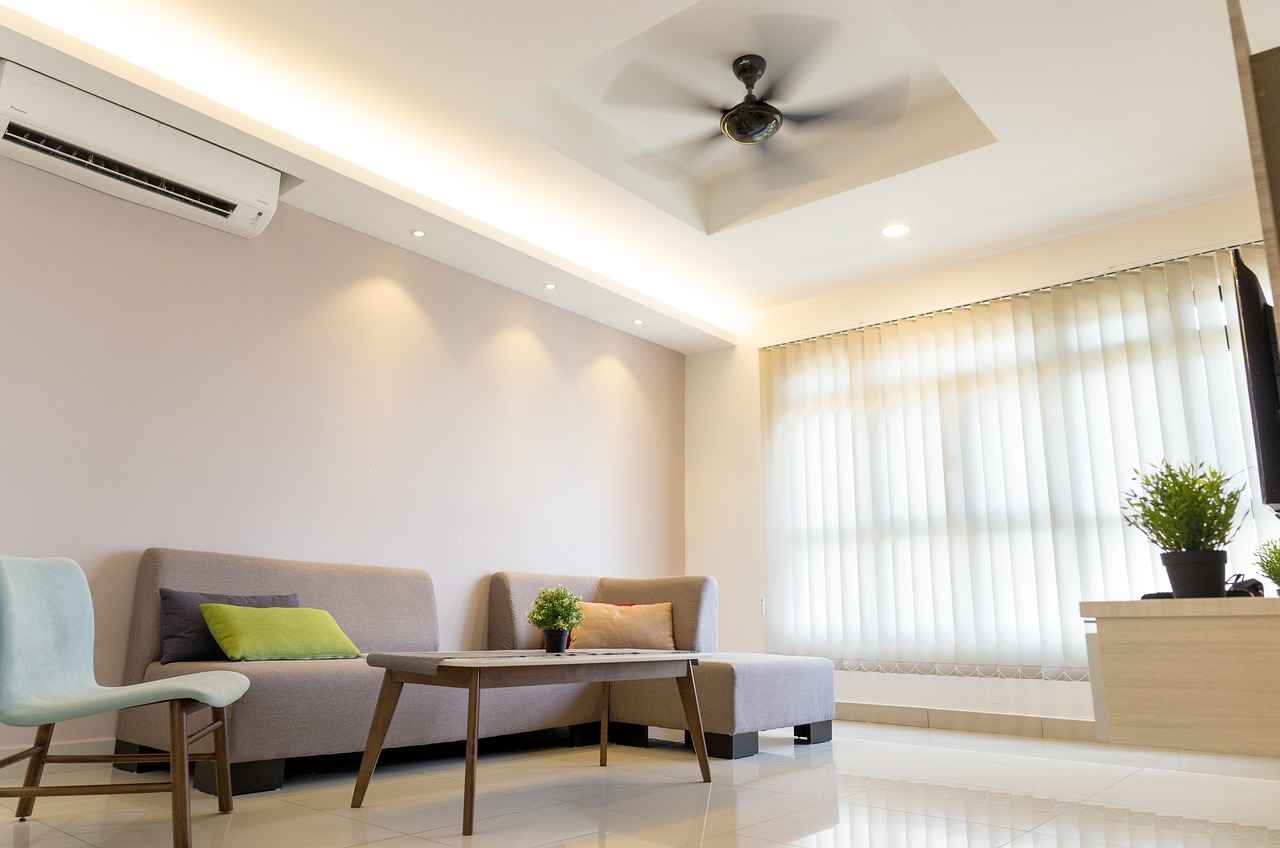
How to Choose the Best Room Divider for Your Space?
When it comes to maximizing space in a studio apartment, choosing the right room divider is essential. A well-selected divider not only enhances privacy but also adds to the overall aesthetics of your living area. In this section, we will explore the key factors to consider when making your selection, ensuring that your room divider meets both functional and stylistic needs.
Before diving into styles and materials, it’s crucial to assess the size of your space. Measure the area where you intend to place the divider. Consider the height, width, and depth to ensure that it doesn’t overwhelm your studio. A well-proportioned divider can create a sense of balance and harmony in your living space.
The style of your room divider should complement your existing decor. Whether you prefer a modern, minimalist look or a more traditional aesthetic, the design of your divider can significantly influence the overall ambiance of your studio. For instance, a sleek, glass divider can enhance a contemporary setting, while a wooden divider with intricate carvings may suit a more classic theme.
Consider the functionality you need from your room divider. Are you looking for a temporary solution for privacy, or do you need a more permanent fixture? Some dividers, like folding screens, offer flexibility and can be easily moved or stored away. Others, such as bookshelves, provide additional storage while serving as a divider. Assess your lifestyle and choose a divider that fits your daily needs.
Color plays a vital role in how a room divider integrates with your space. Selecting hues that either blend with or contrast against your existing palette can enhance the visual appeal of your studio. A neutral divider can create a seamless look, while a bold color can serve as a statement piece. Consider using color swatches to visualize how different options will look in your space.
The material of your room divider affects both its durability and aesthetic. Common materials include wood, fabric, metal, and glass. Each comes with its own set of advantages: wood offers warmth and sturdiness, fabric provides softness and flexibility, while glass can create an illusion of space. Consider the wear and tear your divider will face and choose a material that aligns with your lifestyle.
Proper installation is key to the effectiveness of your room divider. If you opt for a permanent solution, ensure that it is securely anchored to avoid any hazards. For temporary dividers, make sure they are stable enough to withstand movement and daily use. If you’re unsure about installation, consult with a professional to ensure safety and functionality.
If you’re feeling creative, consider incorporating DIY elements into your room divider. This can be a cost-effective way to achieve a unique look while ensuring that the divider meets your specific needs. Materials like curtains, repurposed furniture, or even decorative screens can be used to create a divider that reflects your personal style.
In conclusion, selecting the best room divider for your space requires careful consideration of size, style, functionality, color, material, and installation. By taking the time to evaluate these factors, you can find a solution that not only enhances privacy but also elevates the overall aesthetic of your studio apartment.
Measuring Your Space: A Crucial Step
When it comes to furnishing a studio apartment, measuring your space accurately is a crucial step that should not be overlooked. This is especially important when considering the addition of a room divider, as it can significantly influence the overall layout and functionality of your living area.
A studio apartment typically combines multiple living functions into one compact area, making it essential to create distinct zones without sacrificing the sense of openness. To achieve this, you need to carefully assess the dimensions of your space. Start by measuring the length and width of the area where you plan to place the room divider. Additionally, consider the height of the ceiling, as this can impact the type of divider you choose.
Once you have your measurements, it is important to visualize how the room divider will fit into the space. Use painter’s tape to outline the dimensions on the floor, which can help you better understand how the divider will affect the flow of the room. Will it create a cozy nook for sleeping, or will it disrupt the natural light? These are vital questions to consider when planning your layout.
Another factor to consider is the style of the room divider. Different types of dividers come in various sizes and designs, from folding screens to bookshelves. Knowing your measurements will guide you in selecting a divider that complements your existing decor without overwhelming the space.
Additionally, think about the functionality of the divider. Do you want it to provide complete privacy, or are you looking for something that allows light to filter through? The answer to this question may influence your choice of materials and design. For instance, a solid wood divider may offer more privacy, while a fabric or transparent option can maintain a sense of openness.
Furthermore, consider the traffic flow within your studio. Ensure that the placement of the room divider does not obstruct pathways or access to essential areas such as the kitchen or bathroom. Taking the time to measure and plan can prevent costly mistakes and ensure that your space remains functional and inviting.
In summary, accurately measuring your studio apartment is not just about fitting a room divider; it is about enhancing your living experience. By taking the necessary steps to assess your space, you can choose a room divider that not only fits perfectly but also elevates the overall aesthetic and functionality of your studio.
Color Coordination: Enhancing Aesthetics
When it comes to decorating a studio apartment, color coordination plays a crucial role in creating a harmonious living space. The right hues can either enhance the overall aesthetic or create a stark contrast that draws the eye. This is especially important when selecting a room divider, as it can significantly impact the room’s ambiance.
Color coordination is important because it helps to create a cohesive look throughout your space. A well-chosen color can either blend in with your existing decor, making the room divider appear seamless, or it can stand out as a statement piece. The decision ultimately depends on your personal style and the atmosphere you wish to achieve.
- Consider Your Existing Palette: Start by evaluating the colors already present in your studio. Look at your walls, furniture, and decor items to determine a color scheme that complements these elements.
- Use Color Theory: Understanding basic color theory can be beneficial. Complementary colors (opposite on the color wheel) create a vibrant look, while analogous colors (next to each other) provide a more subtle and harmonious feel.
- Test Samples: Before committing to a color, test samples on the room divider to see how they interact with the light and other colors in your space.
Neutral colors like white, beige, and gray are often safe choices, as they can blend seamlessly into most decors. However, if you prefer a bolder approach, consider deep blues, greens, or even vibrant reds to make a statement. Pastel shades can also add a touch of softness and warmth, making them ideal for cozy studio apartments.
To create a focal point, choose a color for your room divider that contrasts with the rest of your decor. For example, if your walls are painted in soft tones, a bold, dark divider can serve as a striking contrast. This technique not only draws attention but also adds depth to your space.
In addition to color, consider incorporating patterns and textures into your room divider. A patterned divider can add visual interest and personality to your space. For instance, a floral or geometric design can enhance the decor theme and make the divider a standout feature.
Ultimately, the choice of color for your room divider should reflect your personal style while enhancing the overall aesthetic of your studio apartment. By carefully considering your existing decor, utilizing color theory, and experimenting with patterns, you can achieve a beautiful and functional living space that feels uniquely yours.
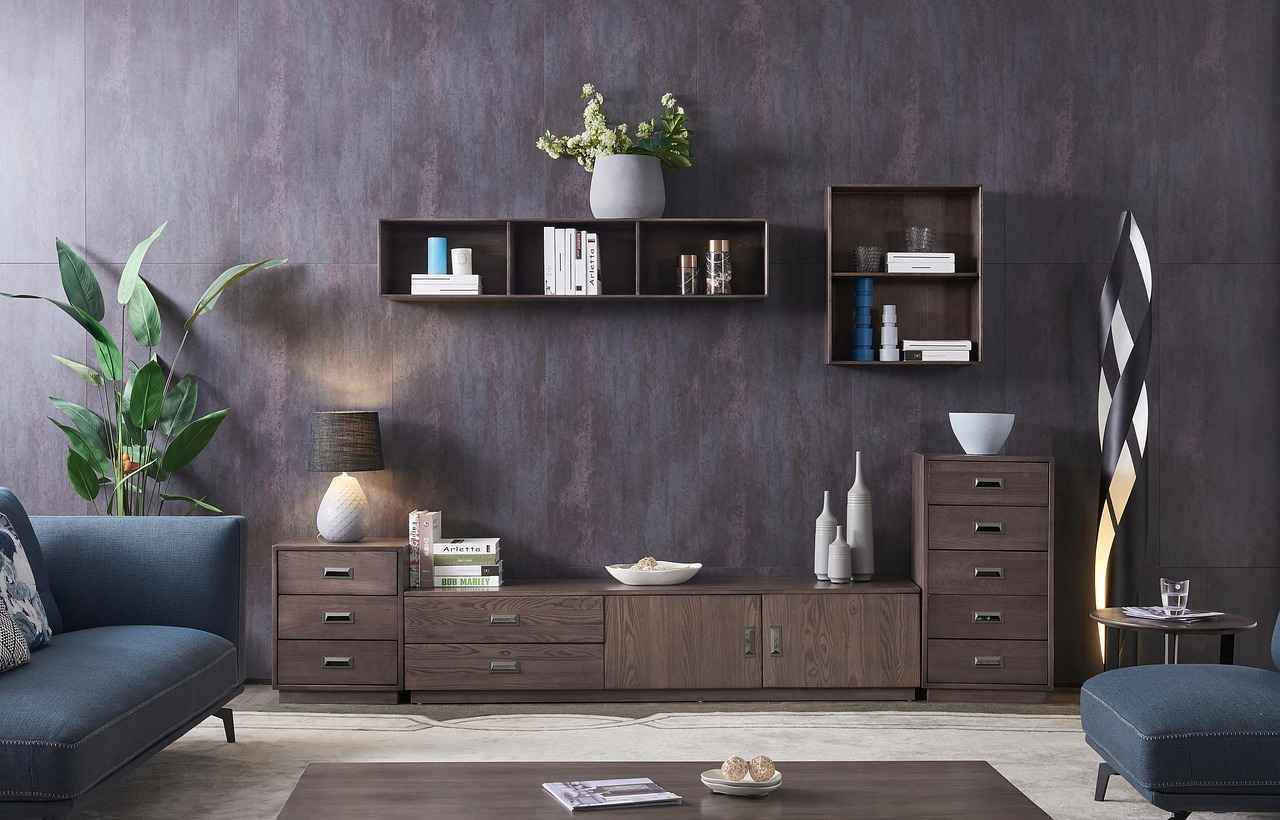
DIY Room Dividers: Creative Solutions for Budget-Conscious Renters
Creating your own room divider can be a fun and cost-effective way to achieve the desired look and functionality in your studio apartment. Not only does it allow for personalized design, but it also provides an opportunity to maximize the use of your space without breaking the bank. This article will guide you through various DIY options, materials, and steps to craft the perfect room divider.
DIY room dividers are an excellent choice for renters looking to maintain flexibility in their living space. They can be easily modified or moved, making them ideal for changing needs. Additionally, creating your own divider can be a rewarding project that reflects your personal style and enhances your apartment’s ambiance.
When embarking on your DIY room divider project, consider using the following materials:
- Curtains: Lightweight and versatile, curtains can be hung from a ceiling track or a tension rod for easy installation.
- Pallets: Repurposed wooden pallets can be transformed into rustic dividers that add character to your space.
- Bookshelves: Open bookshelves not only serve as dividers but also provide storage for books and decorative items.
- Fabric Panels: Stretching fabric over a frame can create a soft, inviting divider that adds texture to your room.
Follow these simple steps to create your own room divider:
1. Measure Your Space: Start by measuring the area where you want to place the divider. Consider the height and width that will best suit your needs.2. Select Your Material: Choose the material that fits your style and budget. For example, if you opt for curtains, select a fabric that complements your decor.3. Design Your Divider: Sketch a design that incorporates your chosen materials. Be creative! Think about patterns, colors, and textures.4. Gather Tools: Depending on your choice, you may need tools like a saw, drill, or sewing machine. Ensure you have everything ready before starting.5. Construct the Divider: Follow your design to assemble the divider. If using curtains, install the track or rod securely. For wooden pallets, connect them using screws or nails.6. Final Touches: Once assembled, consider adding decorative elements such as lights, plants, or artwork to enhance its visual appeal.
To make your room divider even more appealing, consider adding decorative touches:
- Lighting: Incorporate string lights or LED strips to create a cozy atmosphere.
- Plants: Adding potted plants can bring life and freshness to your space.
- Artwork: Hanging artwork or photographs on your divider can personalize it and make it a focal point in the room.
One of the main advantages of a DIY room divider is its flexibility. As your needs change, you can easily modify or relocate your divider. For instance, if you decide to rearrange your furniture, your divider can be adjusted to fit the new layout.
In conclusion, creating your own room divider is a practical and fulfilling project that can greatly enhance your studio apartment’s functionality and aesthetic appeal. With a variety of materials and designs to choose from, you can craft a divider that not only meets your privacy needs but also reflects your personal style.
Materials for DIY Room Dividers
When it comes to creating personalized spaces in studio apartments, DIY room dividers offer a fantastic solution. Not only do they provide privacy, but they also allow for a touch of creativity and individual expression. In this section, we will explore various materials that can be used for DIY room dividers, emphasizing their versatility and the unique character they can bring to your home.
Common materials for DIY dividers include:
- Curtains: One of the most popular choices for DIY dividers, curtains are easy to install and come in a myriad of colors and patterns. They allow for flexibility in creating a temporary or permanent division, and can be drawn back when not in use, making them a practical option for small spaces.
- Pallets: Repurposed wooden pallets are an excellent way to create rustic and stylish dividers. They can be easily assembled and painted or stained to match your decor. Pallet dividers can also be used to create vertical gardens, adding a touch of greenery to your space.
- Repurposed Furniture: Old bookshelves, dressers, or cabinets can be transformed into effective room dividers. This not only saves money but also gives a unique character to your space. By arranging furniture strategically, you can create distinct areas within your studio without the need for new purchases.
- Fabric Panels: Using fabric stretched over a frame can create a lightweight and visually appealing divider. This option allows for a wide range of designs and patterns, enabling you to customize the look to fit your style.
- Wooden Screens: Crafting a wooden screen can add a touch of elegance to your room. With some basic woodworking skills, you can create intricate designs that serve both as a divider and a decorative element.
- Cardboard or Foam Board: For those on a tight budget, cardboard or foam board can be used to create lightweight and temporary dividers. They can be painted or covered with fabric to enhance their appearance.
Each of these materials has its own set of advantages, allowing you to choose based on your personal style, budget, and the level of permanence you desire. The beauty of DIY projects is that they can be tailored to your specific needs, making your living space truly your own.
When selecting materials for your DIY room divider, consider the overall aesthetic of your studio apartment. Do you prefer a modern look, or are you drawn to a more rustic feel? Also, think about the functionality of the divider. Will it be used solely for privacy, or do you want it to serve additional purposes, such as storage or decoration?
In summary, DIY room dividers made from curtains, pallets, repurposed furniture, and other materials not only provide privacy but also allow for personalization in your living space. With a little creativity and effort, you can create a divider that enhances both the functionality and style of your studio apartment.
Step-by-Step Guide to Building a DIY Room Divider
Creating your own room divider can be an exciting project that allows you to tailor your space according to your specific needs and aesthetic preferences. A DIY room divider not only enhances your studio apartment’s functionality but also adds a personal touch to your decor. This guide provides you with a step-by-step approach to constructing a room divider that is both practical and stylish.
DIY room dividers offer several advantages:
- Cost-Effective: Building your own divider can save you money compared to purchasing pre-made options.
- Customization: You can design it to fit your exact dimensions and style preferences.
- Creative Outlet: It allows you to express your creativity and make something unique for your space.
Before you start, gather the following materials:
- Wood or Pallets: For a sturdy frame.
- Fabric or Curtains: To add texture and color.
- Paint or Stain: For finishing touches.
- Tools: Hammer, nails, screws, and a saw (if using wood).
1. Measure Your Space: Determine the dimensions of your room divider based on the area you want to separate. Ensure it fits well without overwhelming the space.2. Design Your Divider: Sketch a design that incorporates your chosen materials. Consider whether you want a solid divider or one that allows light to pass through.3. Cut the Materials: If using wood, cut it to the desired lengths for the frame. For pallets, you may need to disassemble them first.4. Assemble the Frame: Using nails or screws, construct the frame. Ensure it is sturdy enough to support the weight of any additional materials.5. Add Fabric or Curtains: Attach your fabric or curtains to the frame. You can use a curtain rod for easy sliding or staple the fabric directly for a more permanent solution.6. Finish Your Divider: Paint or stain the wood to match your decor. Allow it to dry completely before moving it into your space.7. Position Your Divider: Place the divider in the desired location, ensuring it provides the privacy and functionality you need.
To ensure a smooth building process, keep the following tips in mind:
- Plan Ahead: Take your time to plan your design and gather materials before starting.
- Stay Safe: Always use protective gear when handling tools and materials.
- Ask for Help: Don’t hesitate to seek assistance from friends or family, especially for lifting heavy materials.
Once your room divider is complete, consider adding decorative elements such as:
- Lighting: String lights or small lamps can create a cozy atmosphere.
- Plants: Incorporate potted plants for a touch of nature.
- Artwork: Hang artwork or photos for a personalized finish.
By following this step-by-step guide, you can create a room divider that not only meets your functional needs but also reflects your personal style. Enjoy the process of building and the new dimension it brings to your living space!
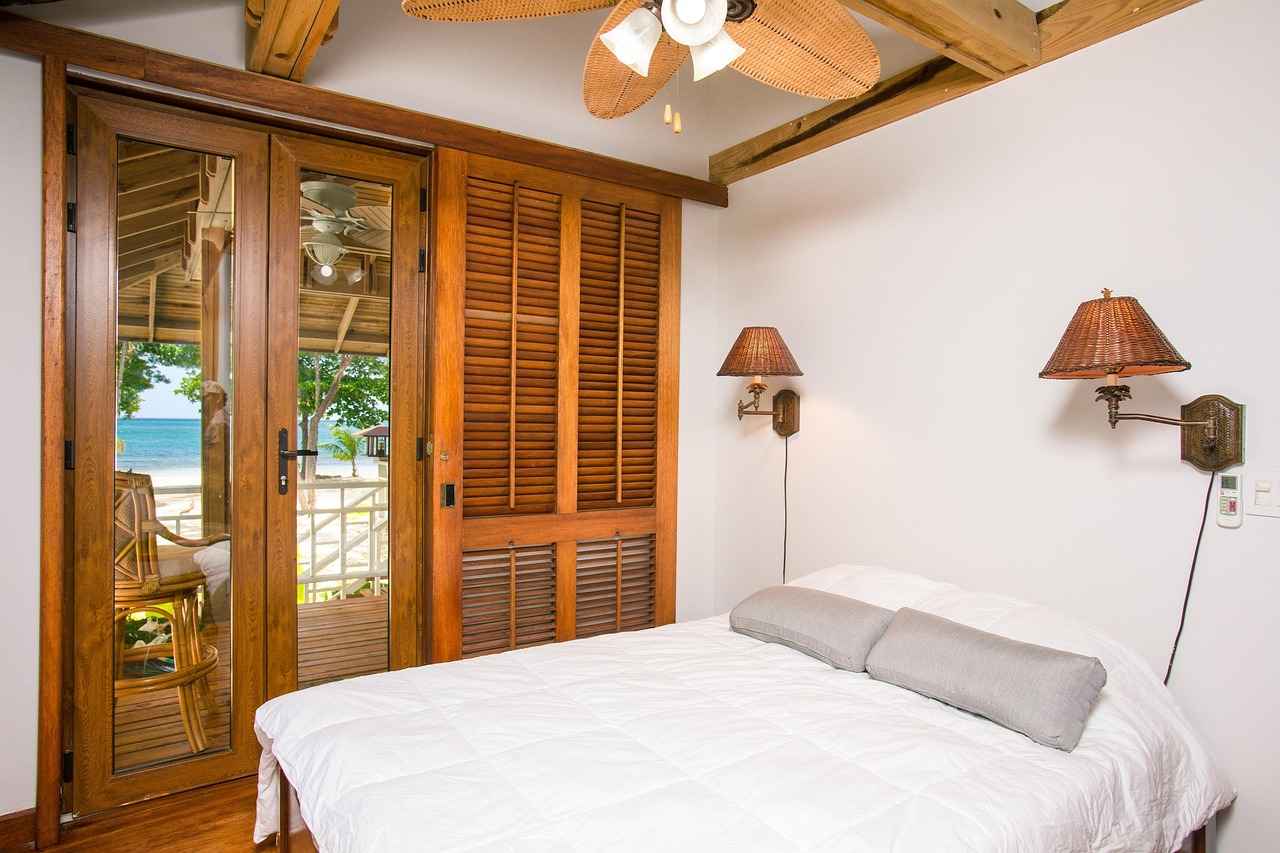
Maintaining Privacy with Transparent Room Dividers
In modern living spaces, particularly studio apartments, the challenge of balancing openness and privacy is a common concern. Transparent or semi-transparent room dividers emerge as a fantastic solution, offering a unique blend of these two elements. They not only enhance the aesthetic appeal of your space but also allow for a sense of separation without completely isolating areas.
Transparent room dividers are typically made from materials such as glass, acrylic, or lightweight fabrics that allow light to pass through. This feature ensures that while you can delineate spaces for different functions—such as sleeping, working, or entertaining—you do not sacrifice the natural light that makes your studio feel spacious and inviting.
- Enhanced Natural Light: Unlike traditional solid dividers, transparent options allow sunlight to permeate throughout the space, creating an airy atmosphere.
- Visual Continuity: They maintain a visual connection between areas, making your studio feel larger and more cohesive.
- Flexibility: Transparent dividers can easily be repositioned or removed, making them ideal for renters or those who frequently change their decor.
When selecting a transparent room divider, it’s essential to consider the level of transparency that best suits your needs. Options range from completely clear to frosted or patterned, which can obscure visibility while still allowing light to filter through. Here are some considerations:
- Clear Glass: Offers maximum openness and light but provides minimal privacy.
- Frosted Glass: Balances light and privacy, making it suitable for areas like bedrooms or home offices.
- Textured or Patterned Dividers: Adds a decorative element while ensuring some level of privacy.
Incorporating design elements into your transparent room dividers can elevate the overall aesthetic of your studio. Consider the following:
- Framing: Use decorative frames to add character and style to your dividers. Wooden or metallic frames can complement various decor themes.
- Color Accents: Adding colored elements or accents can create a focal point while maintaining transparency.
- Artwork or Panels: Hang lightweight art or fabric panels on the dividers to introduce texture and personality.
Installing transparent room dividers can be straightforward, but here are some practical tips to ensure they are both functional and visually appealing:
- Secure Installation: Ensure that your dividers are securely installed to prevent accidents, especially if using glass.
- Regular Cleaning: Transparent materials can show smudges and dust easily, so regular cleaning is essential to maintain their clarity.
- Adjustable Features: Consider using dividers that can be adjusted in height or width to fit different spaces as your needs change.
In conclusion, transparent or semi-transparent room dividers are a stylish and practical choice for studio apartments. They provide a perfect balance of privacy and openness, enhancing both the functionality and aesthetic of your living space. By carefully selecting the right materials and design, you can create a harmonious environment that meets your needs while reflecting your personal style.
Choosing the Right Transparency Level
When it comes to designing your living space, especially in a studio apartment, the choice of room divider is crucial. One significant aspect to consider is the level of transparency of the divider. Understanding the different levels of transparency can greatly assist you in selecting a divider that offers the right amount of privacy without completely closing off your space.
Transparency in room dividers plays a vital role in maintaining an open feel while still providing a sense of separation. By selecting a divider with the appropriate transparency level, you can enhance natural light flow, create visual interest, and define areas without sacrificing the overall spaciousness of your studio.
- Opaque: These dividers block all visibility, ensuring maximum privacy. They are ideal for areas where you need complete separation, such as a bedroom nook.
- Translucent: These offer a semi-transparent option, allowing light to filter through while still providing some privacy. They are excellent for creating a cozy atmosphere without making the space feel cramped.
- Transparent: Clear dividers maintain an open concept, allowing visibility and light to flow freely. These are perfect for delineating spaces while keeping the overall ambiance airy.
To choose the right transparency level, consider the following factors:
- Functionality: Determine the purpose of the divider. If you need a private workspace, opt for opaque or translucent options. For decorative purposes, transparent dividers may be more suitable.
- Lighting: Assess the amount of natural light in your studio. If it’s limited, a translucent or transparent divider can help maximize light flow.
- Style Preferences: Consider how the transparency level fits with your overall decor. A clear acrylic divider can enhance a modern aesthetic, while a fabric screen may suit a more traditional style.
Incorporating design elements such as patterns or textures into transparent dividers can enhance their visual appeal. For instance, a frosted glass divider can provide privacy while adding an artistic touch. Similarly, a divider with a geometric pattern can serve as a focal point in your living space.
- Placement: Position your divider strategically to create distinct areas, such as a sleeping zone or a workspace, without obstructing light.
- Accessorizing: Use plants or decorative items on either side of the divider to create a cohesive look while maintaining openness.
- Adjustability: Consider using movable dividers that can be repositioned as needed, allowing for flexibility in your layout.
By carefully considering the transparency level of your room divider, you can achieve the perfect balance between privacy and openness, enhancing both the functionality and aesthetics of your studio apartment.
Combining Transparency with Design
When considering room dividers for studio apartments, the choice of materials and designs plays a crucial role in achieving both functionality and aesthetic appeal. Combining transparency with innovative design elements can significantly enhance the overall look and feel of your living space.
Transparent room dividers are an excellent option for studio apartments as they allow light to flow freely while creating distinct areas within the space. This balance of openness and privacy is essential in smaller living environments. By incorporating design elements such as patterns or textures, you can elevate the visual appeal of these dividers, making them not just functional but also a focal point in your decor.
Patterns can transform a simple transparent divider into a stunning design feature. Consider using:
- Geometric Patterns: These can add a modern touch and create visual interest.
- Floral Designs: Soft, organic patterns can introduce a sense of warmth and comfort.
- Stripes or Chevron: These can create a sense of height or width, depending on their orientation.
By selecting the right pattern, you not only enhance the divider’s look but also complement your existing decor.
Textures are another essential element when designing transparent dividers. They can add depth and richness to your space. Consider materials such as:
- Frosted Glass: Offers a sleek look while providing some privacy.
- Textured Acrylic: Adds a modern flair and is lightweight.
- Fabric Panels: Softens the space and can be easily changed to update the look.
These textures can create a tactile experience that contrasts beautifully with the sleekness of transparency.
While aesthetics are important, the functionality of your room divider should not be overlooked. Ensure that the design elements you choose do not compromise the divider’s primary purpose of providing privacy and separation. For instance, a frosted glass divider with a geometric pattern can still allow light to filter through while creating a sense of division.
When selecting a transparent room divider that incorporates design elements:
- Measure Your Space: Ensure the divider fits well without overwhelming the area.
- Consider Your Decor: Choose patterns and textures that complement your existing furnishings.
- Think About Maintenance: Opt for materials that are easy to clean and maintain.
By keeping these practical tips in mind, you can effectively combine transparency with design, resulting in a room divider that enhances both the functionality and beauty of your studio apartment.
Frequently Asked Questions
- What is the best type of room divider for a studio apartment?
The best type of room divider really depends on your personal style and needs. Folding screens are great for flexibility, while bookshelves offer functionality and storage. Consider what suits your lifestyle!
- How do I measure my space for a room divider?
Measuring your space is crucial! Use a tape measure to find the dimensions of the area where you want the divider. Make sure to account for any furniture and the flow of movement in your studio.
- Can I make my own room divider?
Absolutely! DIY room dividers can be a fun project. You can use materials like curtains, pallets, or even old furniture to create something unique that fits your style and budget.
- Are transparent room dividers effective for privacy?
Yes, transparent room dividers can provide a balance between openness and privacy. Just choose the right level of transparency to ensure you feel comfortable while keeping the space airy.
- How do I choose the right color for my room divider?
When selecting a color, think about how it will blend with your existing decor. You might want it to stand out as a statement piece or blend in for a cohesive look—it’s all about your personal preference!














